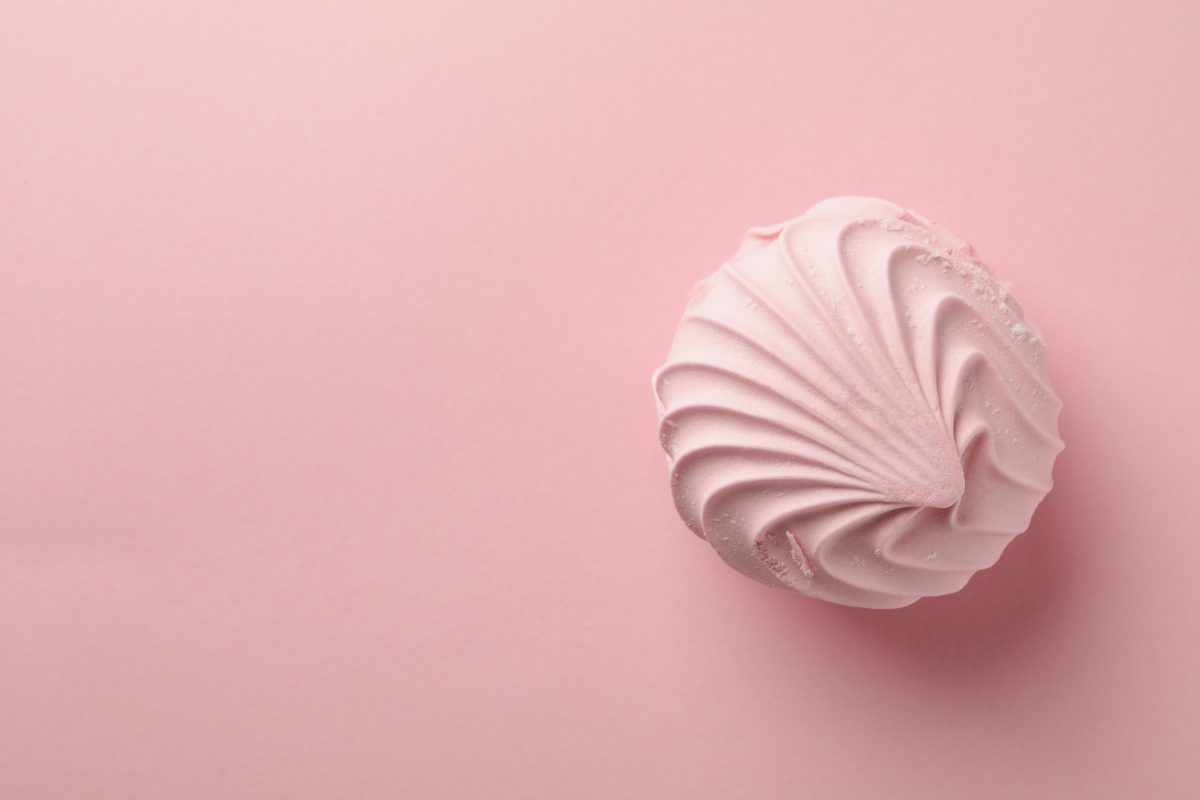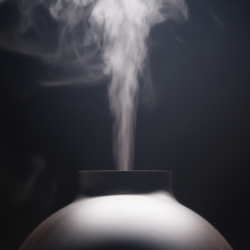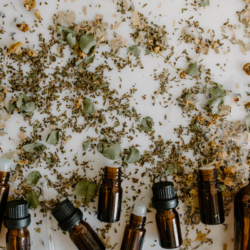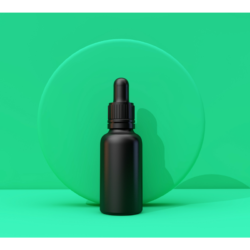Essential oils can be used to make a wide range of creations, and can be used in everyday cooking. Meringues are very light and fine pastries, perfect for a quick snack. The advantage of preparing meringues with essential oils is that they add an aromatic note with a denser , more colourful flavour. In this article, I’ll show you how to impress your guests with meringues made with essential oils.
Why use essential oils in your meringues?
Essential oils have been used for centuries for their therapeutic properties. They can also add intense flavours and aromas to your dishes. Unlike liquid extracts, essential oils are more concentrated and therefore require moderate use. Essential oils can provide a variety of health benefits, depending on their botanical origin. For example, lavender essential oil can help relieve stress and insomnia, while lemon essential oil can boost the immune system.
Which essential oils should you use in your meringues?
The citrus essences that are easiest to use: Bergamot, Clementine, Combawa, Green mandarin, Red mandarin, Sweet orange, Grapefruit.
- Essential oils with a lemony flavour: Lemongrass, Lemon Litsée, Verbena, Lemon Balm
- Essential oils with floral notes are the most original: Angelica, Geranium Bourbon, Fine Lavender, Neroli, Damask Rose, etc
*Warning: for lavender, use lavandula angustifolia or vera – wild lavender – but NEVER use spike lavender or stoechade, which contain camphor that is toxic in high doses.
In fact, there are a variety of essential oils that you can use to give your meringues a unique flavour. Here are a few suggestions:
Lemon essential oil
Lemon essential oil adds a touch of freshness and lightness to your meringues. It can also boost the immune system and help relieve headaches.
Lavender essential oil
Lavender essential oil adds a floral, soothing flavour to your meringues. It can also help reduce stress and anxiety.
Peppermint essential oil
Peppermint essential oil adds a refreshing, minty flavour to your meringues. It can also help relieve digestive problems.
Little known for its culinary uses, Peppermint essential oil can nevertheless enrich your recipes. Just a few drops can transform a chicken stock into an exquisite dish. Its refreshing flavour adds a bright, original touch to your desserts, whether sweet or fruity. It can also be used to create cocktails and hot drinks. Its fresh, minty aroma is ideal for enhancing the flavour of soups, salads or other dishes, while stimulating the senses.
Peppermint essential oil should be used in moderation, especially in preparations for large numbers of people, because of its strong flavour. In cooking, it can be used creatively, especially in desserts where it adds a minty note, whether in chocolate or fruit recipes, or even in cocktails such as the Mojito. It goes well in preparations based on honey, cake batter, agave or maple syrup, and recipes containing rum.
It is also appreciated for its digestive properties, making it ideal for use as a dessert after a hearty meal. Alternatively, a Peppermint lozenge will give you good breath and a feeling of freshness.
For simpler uses, a drop of Peppermint essential oil on a sugar cube can be used as an energy boost or to soothe intestinal pain. This essential oil is low in calories (2 calories per drop) and is a natural flavouring, a preferable alternative to commercial artificial flavourings.
Tips for successful meringues with essential oils
Here are a few tips on how to make your meringues with essential oils a success:
- Use egg whites at room temperature to obtain a better texture.
- Add a pinch of salt to help stabilise the egg whites.
- Avoid beating the egg whites for too long to prevent them from becoming too stiff.
- Use high-quality, edible essential oils to ensure optimum flavour and safety.
- Do not overload your meringues with too much essential oil to avoid altering the flavour.
How do I use essential oils in cooking?
Before adding essential oils to your meringues, it’s important to choose high-quality, edible oils. Essential oils must be pure and contain no additives. We recommend using small quantities to avoid altering the flavour of your meringues.
Here are the steps to follow to add essential oils to your meringues:
Prepare the ingredients
The basic ingredients for the meringues are egg whites and sugar. You’ll also need a pinch of salt and a little white vinegar. To add essential oils, you’ll need one or two drops of the oil of your choice.
Beat the egg whites
In a large bowl, beat the egg whites until frothy. Then add the salt and white vinegar and continue beating until the egg whites form stiff peaks.
Add the sugar and essential oils
Slowly fold the sugar into the egg whites, beating constantly. Then add one or two drops of the essential oil of your choice. It’s important not to overmix to prevent the egg whites losing their light, airy texture.
Shape the meringues
Preheat your oven to 100°C. Using a piping bag, pipe small meringues onto a baking tray lined with baking paper
paper. Be sure to leave enough space between each meringue to prevent them from sticking together.
Baking the meringues
Place the baking tray in the preheated oven and cook the meringues for about 2 hours, until they are dry and crisp on the outside. Turn off the oven and leave the meringues to cool completely inside the oven to prevent them from cracking.
Ingredients :
- 6 eggs
- A pinch of salt
- 250 g icing sugar
- 1 to 2 drops of essential oil of your choice
Preparation
In a mixer at medium speed, beat the egg whites until stiff and fold in the sugar in batches. Finish by folding in the slivered almonds and essential oil.
Place a sheet of greaseproof paper on the baking tray. Using a piping bag, pipe the meringue onto the baking paper. Bake the meringues at 70° for 2 hours.
STEP 1
Remove the eggs from the pan at least 15 minutes before beating the egg whites until stiff.
STEP 2
Separate the yolks from the whites
Put a pinch of salt in the egg whites.
STEP 3
Whisk the egg whites until stiff
Fold in the icing sugar in batches.
STEP 4
Add 2 drops of essential oils to your preparation.
Using a spatula, make your meringue shapes on baking paper.
(You can sprinkle your meringues with various seeds, lavender flowers, flaked almonds, dried fruit and candied zest if you like)
STEP 5
Place in the oven.
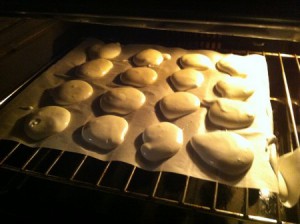 Bake for two hours at 70 degrees.
Bake for two hours at 70 degrees.
Adjust the cooking time according to the size of the meringues: the larger they are, the longer they need to cook.
(Remember to take the meringues out of the oven when you press down on the top and the white doesn’t break)
Enjoy your meringues.
The benefits of cooking your meringues with essential oils
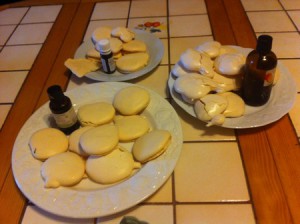 The advantage of preparing meringues with essential oils is that they add an aromatic note with a denser, more colourful flavour. Essential oils give preparations a flavour and depth that are unlike those provided by powdered spices, citrus zest or dried herbs. What’s more, essential oils are a natural alternative to artificial flavourings.
The advantage of preparing meringues with essential oils is that they add an aromatic note with a denser, more colourful flavour. Essential oils give preparations a flavour and depth that are unlike those provided by powdered spices, citrus zest or dried herbs. What’s more, essential oils are a natural alternative to artificial flavourings.
Bottles of essential oils are always available and can be used to replace fresh flowers and herbs out of season: lavender, basil, dill, etc. Or even fruit and spices: citrus fruits, vanilla pods.
| Advantages of essential oils | Synthetic fragrances/Artificial additives |
|---|---|
| Authentic flavours | Flavours are often artificial and less complex |
| Pure, natural flavours extracted directly from plants. | Flavours manufactured with chemical components. |
| Health and safety | Potentially harmful or allergenic. |
| Absence of harmful artificial ingredients, with proven therapeutic benefits. | May contain undesirable substances. |
| Concentration and Economy | Requires a higher dosage. |
| Highly concentrated, they are economical because they are used in small quantities. | Less concentrated, often more expensive in the long term. |
| Sustainability | Environmental implications of chemical processes. |
| Can be produced sustainably and ethically. | Production can have a negative environmental impact. |
This table provides a clear overview of the benefits of essential oils compared to artificial flavours, highlighting their superiority in terms of taste, health, economy and environmental impact.

